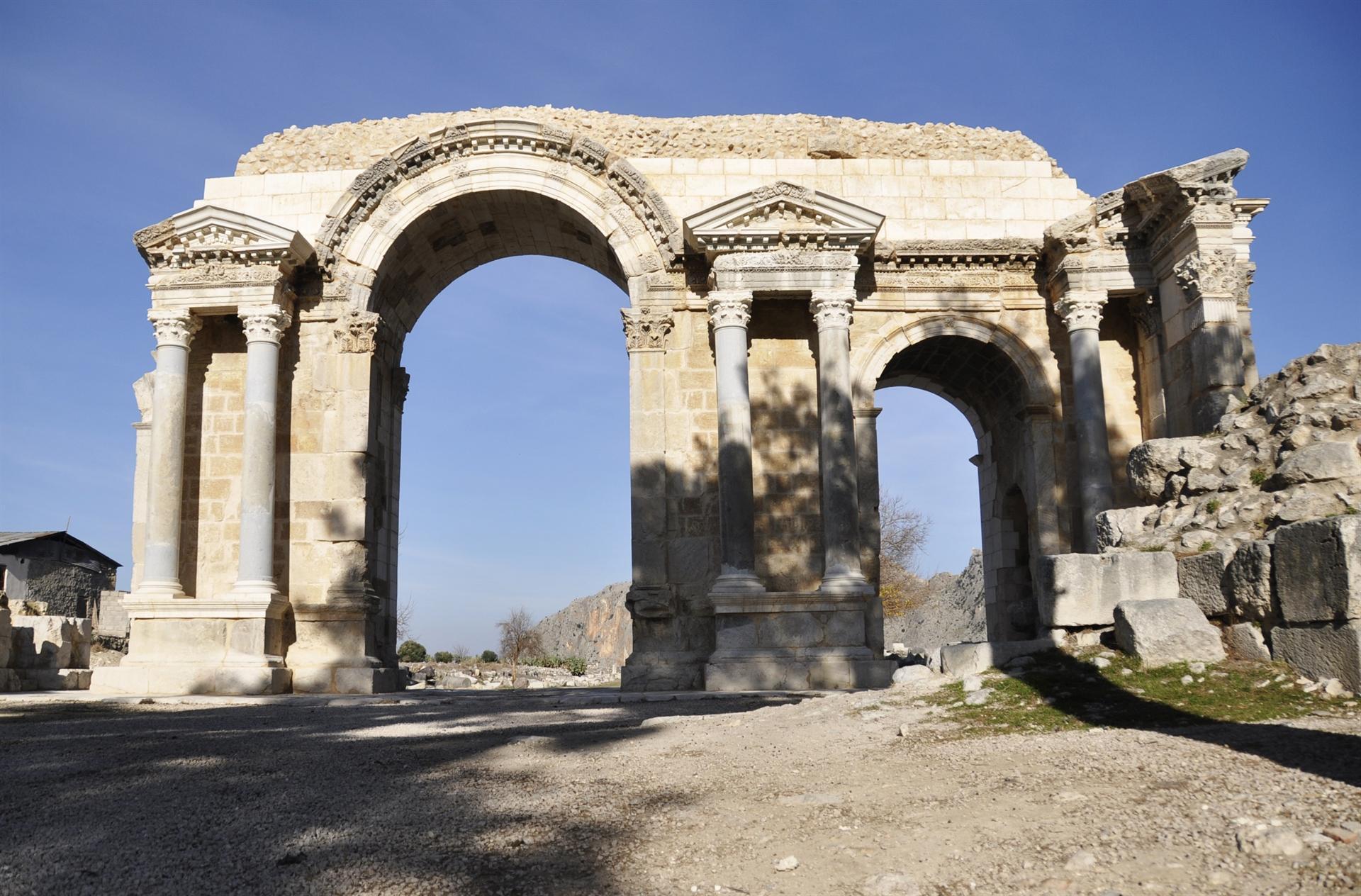Findings in Anavarza excite archaeologists
ADANA

The 2020 excavations in the ancient city of Anavarza, which is on the UNESCO World Heritage Tentative List as it bears the cultural traces of the Hellenistic, Roman, Byzantine, Sassanid and Ottoman periods, have been completed. New findings in the ancient city in the southern province of Adana’s Kozan district have caused excitement among the archaeologists.
Known as the “Invincible City” in the past, the ancient city attracts attention with its colonnaded street as well as its magnificent crown gate and walls. A stone axe unearthed during excavations this year in the city, which is believed to have a history of 2,000 years, is among the most important finds of the year.
It was reported that the stone axe, which was determined to belong to the Chalcolithic Period, was used in religious ceremonies and rituals.
Speaking to the state-run Anadolu Agency, the head of Anavarza excavations and member of Çukurova University’s Faculty of Arts and Sciences Department of Archeology, Fatih Gülşen, said the excavations, which started with a small team at the gate known as the “Triumphal Arch” in 2013, continued with a scientific team of approximately 100 people in 2020.
Stating that the excavations were carried out in the “Triumphal Arch,” the colonnaded street, the church, the bathhouse and the amphitheater, Gülşen said that the warehouse, documentation, restoration and conservation work is still continuing. He said that they are working with a mixed team and that Çukurova University and Adana Archeology Museum personnel are in the core staff.
Explaining that they have reached exciting results in the excavations and that the ancient city of Anavarza stands out in many ways, Gülşen said, “It is not only the triumphal arch, but when we enter through the gate, the colonnaded street, which is 34 meters wide and 2,700 meters long, is again the most monumental ancient colonnaded street in Anatolia.”
Gülşen stated that the restoration and conservation works of the first 250-meter section will be initiated with the opening of the shops on both sides of the colonnaded street in the coming years.
Drawing attention to the importance of the amphitheater in the excavation area, Gülşen said, “Anavarza Amphitheater, one of the three amphitheaters in Anatolia, has survived to the present day and will be an amphitheater that can be fully unearthed and restored in Anatolia with the completion of excavation and restoration works.”
Reminding that the city’s foundation was shown as 19th century B.C. in all domestic and foreign publications, Gülşen said, “Very important items were found during the archaeological excavations this year. We found a stone axe. We know that stone axes were used from the Neolithic Period to the Middle Ages, but due to the fact that obsidians and much earlier materials such as flintstones were unearthed around the stone axe in Anavarza, it is estimated that the ancient city dates back to 5,000 B.C. This shows us that the city is approximately 7,000 years old. We can say that this is the most important scientific discovery of this year. Not only does Anavarza’s history go back 5,000 years, but one of the earliest settlements of the Cilicia region has been unearthed in entire Çukurova.”
Gülşen added that in the new year, excavations would continue in areas such as baths, amphitheaters and churches as well as on the “triumphal arch” and the colonnaded street.
















